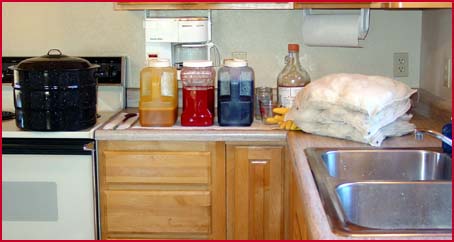
Some feel that using "natural dyes" is somehow safer or less toxic. If you are bent on drinking your dye concentrates and their mordants, then natural dyes are not one bit safer or less toxic.
There is *NO* class of dyes that is 100% fade proof given enough time and exposure to UV light. The aniline dyes come closest to being fade resistant, but again, over time in direct sunlight, they will fade.
Dyes and their attendant mordants, whether these be acids, alum, tin, or other chemicals are to be used with care as are the dye powders themselves. Just as with paint and paint pigments, you would NOT drink these, smear them on your body, or splash them in your eyes. You would NOT use your dye pots, containers, spoons, measuring cup or any other utensil you have used for dyeing to cook with. Keep all of your dyes, utensils, mordants, etc. well out of the reach of all children and safely stored when not in use. Just use common sense and move with care, don't be in a rush and enjoy yourself!

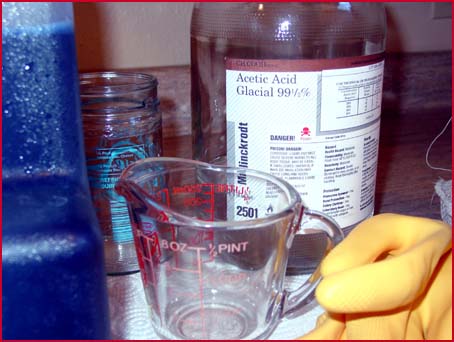
|
I buy "glacial acetic acid" from a good camera store ... the kind that sells all of the chemicals so you can do your own photo development ... you can get a small jug (pint, I think) or by the gallon. Or, if you are near a college that teaches chemistry, you can buy from their chem stores. I use the class of dyes known as "aniline strong acid dyes" or washfast acid dyes.If you can't get glacial acetic acid, you can use white vinegar ... it is the same thing only very dilute. Instead of 1/4 cup glacial acetic acid per 3 gallons of water + dyes + 1 pound of wool, you could use 2 cups of vinegar. |
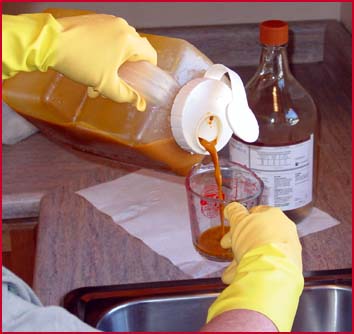
|
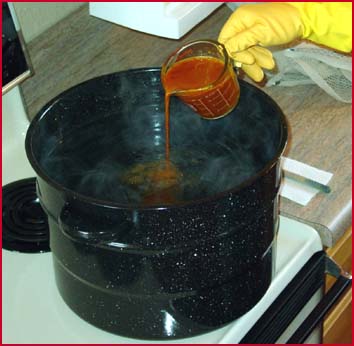
|
I find its much easier to mix 1/2 cup of this colour concentrate + 1 cup of that colour, rather than teaspoons or 1/2 teaspoons, or measure out a few grams of powder.
The dye stock solution will keep a long time ... up to a year. If you find mold growing on it, strain that off.
This is why no two dye pot batches will be perfect nor exactly the same. You will have a 1 pound dye lot. If you had a bigger pot and could dye more than 1 pound of wool at a time, then you would be able to produce a bigger dye lot. Commercial dyers have huge vats, but even so their dye lots are numbered and different dye lots may vary a little. Your variations will be considerably greater as its difficult to do exactly the same thing again 1 month later, or whenever you go back to dyeing again.
[an error occurred while processing this directive]
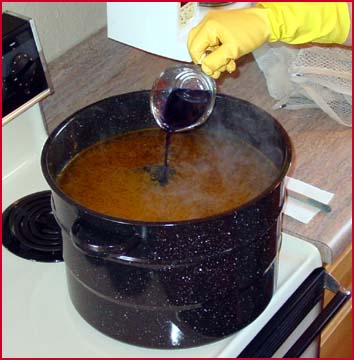

I use one of those large, navy colored porcelain canning pots. Bring 3 gallons of water to near boil.
Add in the dyes (a liquid concentrate - usually anywhere from a 1/2 cup to 2 cups) In these photos I am dyeing the wool green, so have used about 1 cup of yellow dye concentrate + 1/2 cup of a strong, clear blue. Mixing dyes is just like mixing water colour paints ... red + blue = purple, etc. but of course the shade will vary depending on how much of one colour + how much of the other.
Dyeing Instructions Part 2
The web server charges a bandwidth transfer fee every time someone downloads one of our free instructional pages.
Please help the sheep pay for downloading this page.
Click on the Typing Sheep above to make your donation using Paypal.
Your donation is gratefully accepted ... thank you, thank you, thank you!